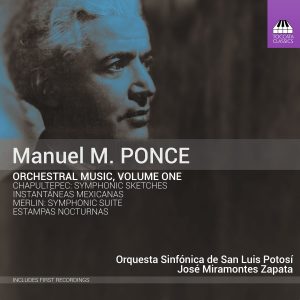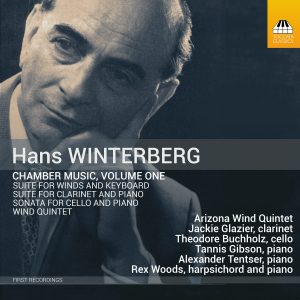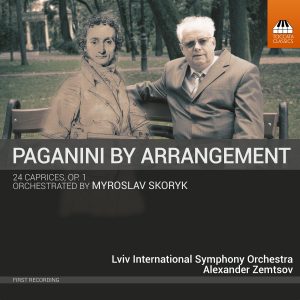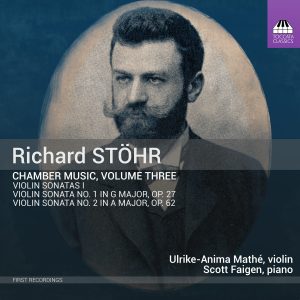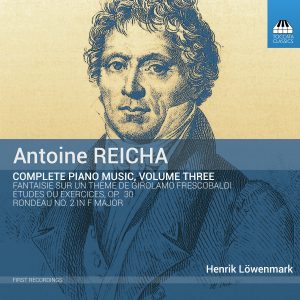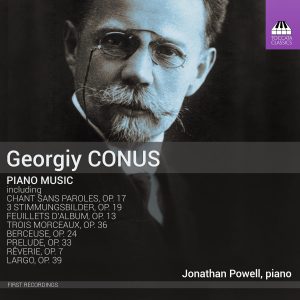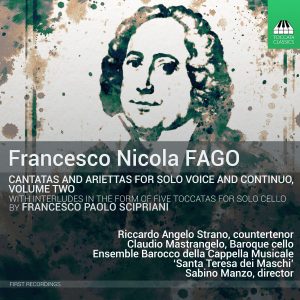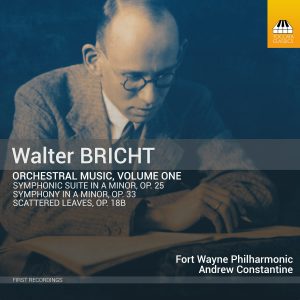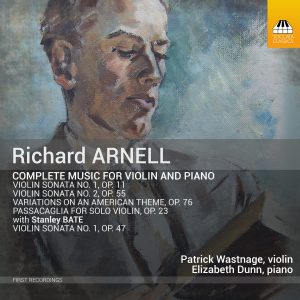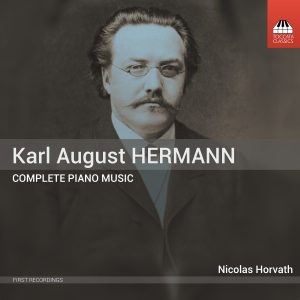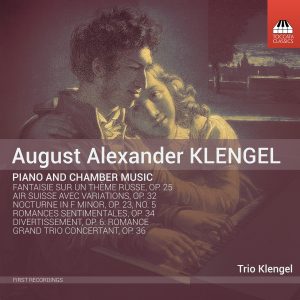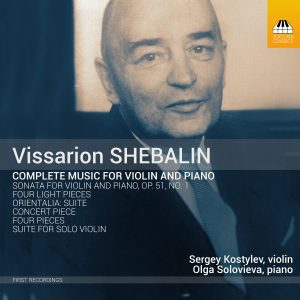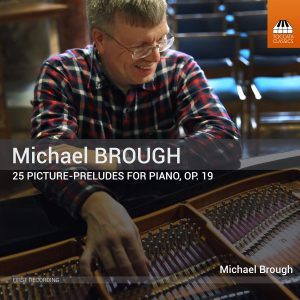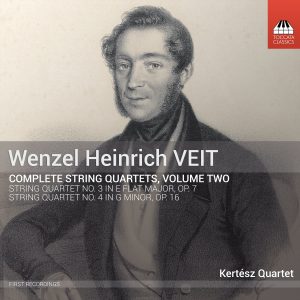Search Results for "Space Wolf: The First Omnibus mp3 torrent" – Page 32
Steve Elcock: Chamber Music, Volume One
The English composer Steve Elcock (b. 1957) spent years writing music without ever expecting it to be heard. The works on this first album of his chamber music show contrasting aspects of his style: the Clarinet Sextet and The Shed Dances are immediately appealing in their melodiousness, harmonic language and mischievous sense of humour, whereas the String Trio No. 1, with its stark juxtaposition of contrasts, and the sextet An Outstretched Hand, which treads a fine line between grief and consolation, both offer powerful comment on our troubled 21st century.
The Veles Ensemble
Daniel Shao, flute (Track 11)
Peter Cigleris, clarinet (Tracks 1–3, 5–11)
Yuri Kalnits, violin (Tracks 1–3)
Leon Bosch, double bass (Tracks 1–3)
Catalina Ardelean, piano (Track 11)
Manuel M. Ponce: Orchestral Music, Volume One
The Mexican composer Manuel María Ponce (1882–1948) is best known for a handful of popular songs and guitar pieces, and yet he left a huge legacy of some 500 works – orchestral, chamber and piano music, art songs and folksong arrangements – which together form the foundation of the Mexican national repertoire. The works recorded here – some for the first time – reveal a composer with a surefooted command of the orchestra, his early impressionism becoming infused with echoes of Mexican indigenous culture in textures of unsuspected richness.
Orquesta Sinfónica de San Luis Potosí
José Miramontes Zapata, conductor
Hans Winterberg: Chamber Music, Volume One
The case of the composer Hans Winterberg (1901–91) is a strange one. A survivor of the Terezín concentration camp, where he had been interned as a Czech Jew, after the War he settled in Munich as a German citizen, and his music enjoyed a number of broadcasts – but after his death, his estate disappeared into the vaults of the Sudeten German Music Institute, where it was placed under embargo, emerging only in 2015. This first album of his music reveals an unusual and individual voice, an idiosyncratic blend of Stravinsky, Janáček and Hindemith, with touches of Poulenc, often expressed with brittle humour and rhythmic verve.
Arizona Wind Quintet
Brian Luce, flute (tracks 1–3 and 10–12)
Sara Fraker, oboe (tracks 1–3 and 10–12)
Jackie Glazier, clarinet (1–3 and 10–12)
Daniel Katzen, horn (tracks 10–12)
William Dietz, bassoon (tracks 1–3 and 10–12)
Jackie Glazier, clarinet (tracks 4–6)
Theodore Buchholz, cello (tracks 7–9)
Rex Woods, harpsichord (tracks 1–3), piano (tracks 13–15)
Tannis Gibson, piano (tracks 4–6)
Alexander Tentser, piano (tracks 7–9)
Skoryk: Paganinini By Arrangement
Some composers – Enescu, Schumann and Szymanowski among them – have had a go at adding piano accompaniments to Paganini’s 24 Capricci for solo violin, and there are arrangements for any number of instrumental combinations. The Ukrainian Myroslav Skoryk (b. 1938) is the first composer to go the whole hog and orchestrate all 24 of them, turning Paganini’s virtuosic violin-writing into a succession of symphonic fireworks, often injecting a touch of humour along the way.
Lviv International Symphony Orchestra
Alexander Zemtsov, conductor
Richard Stöhr: Chamber Music, Volume Three: Violin Sonatas I
Like Korngold, Schoenberg, Toch, Zeisl and Zemlinsky, Richard Stöhr (1874–1967) was another Austrian composer driven into American exile by the Nazis. His generous output of music, being rediscovered at last in these Toccata Classics recordings, includes seven symphonies, much chamber music, songs, and choral and piano pieces. The first two of his fifteen violin sonatas offer a seamless outpouring of fin de siècle Viennese lyricism, with one good tune following another, in a style somewhere between Brahms and Korngold.
Ulrike-Anima Mathé, violin
Scott Faigen, piano
Antoine Reicha: Complete Piano Music, Volume Three
The piano music of the Czech-born composer Antoine Reicha (1770–1836) – friend of Haydn and Beethoven, teacher of Berlioz, Liszt, Franck and many others – is one of the best-kept secrets in music. He was an important influence on composers of the next generation but, apart from an innovative set of fugues, his piano works have remained almost unknown since his own day. Encompassing Baroque practices as well as looking forward to the twentieth century, they are full of harmonic and other surprises that show this liveliest of musical minds at work. Reicha’s twenty Études ou Exercices, recorded here for the first time, manage to combine his maverick inventiveness with a considerable degree of charm.
Henrik Löwenmark, piano
Georgiy Conus: Piano Music
Georgiy Eduardovich Conus (1862–1933) is one of the astonishing number of gifted Russian composer-pianists who helped shape what is known as the ‘Silver Age’ of Russian music, but whose achievements have since been obscured by the music of Rachmaninov and others. This first-ever recording of his piano music reveals a composer with his roots in Tchaikovsky, a harmonic sophistication akin to Skryabin’s and an emotional range that stretches from an easygoing charm to dramatic and powerful keyboard virtuosity.
Jonathan Powell, piano
Nicola Fago: Cantatas for Solo Voice and Continuo, Volume Two
Nicola Fago (1677–1745) was one of the leading practitioners of the chamber cantata, a kind of mini-opera for voice and ensemble brought to perfection by several generations of composers working in the aristocratic courts in Naples. The six examples by Fago recorded here – for the first time – reveal him to have been a master of the genre: they are dramatic, full of rhythmic excitement and stuffed with catchy tunes. Fago’s contemporaries called him ‘Il Tarantino’, since he was born in Taranto, in the area now known as Puglia, in the heel of Italy; this recording is the second of a series of three Toccata Classics albums dedicated to Fago’s cantatas, and part of a wider exploration of Pugliese composers.
Riccardo Angelo Strano, countertenor (1)
Ensemble Barocco della Cappella Musicale ‘Santa Teresa dei Maschi’ (1, 3, 5, 7, 9, 11)
Claudio Mastrangelo, Baroque cello
Giuseppe Petrella, theorbo and Baroque guitar (3, 5)
Davide Milano, violone (3, 5, 9)
Sabino Manzo, harpsichord and director
Walter Bricht: Orchestral Music, Volume One
The Austrian composer Walter Bricht (1904–70) – reportedly Franz Schmidt’s favourite student – was one of many musicians of Jewish ancestry who fled Vienna after the Anschluss for the safety of the USA; Bricht became a treasured professor at Indiana University in Bloomington. Fittingly, it is the Fort Wayne Philharmonic, also in Indiana, that has made the first album of Bricht’s music, in its own debut recording, thereby rescuing a major, and echt-Viennese, voice from eight decades of silence, and revealing a late-Romantic musical language that, like Schmidt’s, unites Baroque counterpoint, a Classical sense of form and Wagnerian chromatic harmony.
Fort Wayne Philharmonic
Andrew Constantine, conductor
Richard Arnell: Complete Music for Violin and Piano
This recording pairs music for violin and piano by two young British composers who found themselves marooned in American exile by World War II: Richard Arnell (1917– 2009) and Stanley Bate (1911–59). Arnell’s music can be warmly lyrical and fiercely dramatic by turn, rather like its energetic and volatile composer. Stanley Bate was briefly a bright star on the musical scene, a brilliant pianist whose career was obscured from his British audience by the War and truncated by his early death. His First Violin Sonata has echoes of two of his teachers – Vaughan Williams and Hindemith.
Patrick Wastnage, violin
Elizabeth Dunn, piano (Tracks 1-15; 17-19)
Karl August Hermann: Complete Piano Music
Linguist, journalist, composer, choir-leader, songwriter, historian, literary philologist and encyclopaedist, Karl August Hermann (1851–1909) has long been recognised as one of the founder-figures of Estonian national awakening in the second half of the nineteenth century. But in spite of his cultural and historical significance, his output of piano pieces has been overlooked until now. This first recording reveals them to be charming miniatures, blending echoes of Chopin and Grieg with the essence of Estonian folksong.
Nicolas Horvath, piano
August Alexander Klengel: Piano and Chamber Music
To the extent that he is remembered at all, the Dresden-born August Alexander Klengel (1783–1852) retains a toe-hold in music history thanks to a monumental set of 48 canon and fugues. But Klengel was an important early-Romantic composer and celebrated piano virtuoso, with a reputation that stretched from St Petersburg to London. This first recording of his piano and chamber music reveals a personality with a strong lyrical impulse, somewhere between Field, Mendelssohn and Chopin, all three of whom he knew personally.
Trio Klengel
Vissarion Shebalin: Complete Music for Violin and Piano
This first recording of the works for violin and piano by the Russian composer Vissarion Shebalin (1902–63) – a close friend and colleague of Shostakovich – reveals a surprisingly high number of unsuspected gems: music immediate in its melodic appeal but plumbing real depths of feeling. The integrity of the music reflects the integrity of its composer, as Shostakovich made clear: ‘His kindness, honesty and absolute adherence to principle always amazed me. His enormous talent and great mastery immediately earned him burning love and authority with friends and musical community’.
Sergey Kostylev, violin
Olga Solovieva, piano
 Pure Sound International Award for best audio recording of Russian academic music
Pure Sound International Award for best audio recording of Russian academic music
2nd Prize Chamber Instrumental Music
Michael Brough: 25 Picture-Preludes for Piano, Op. 19
Late in 2013 the English pianist, organist and composer (and solicitor) Michael Brough, born in Yorkshire in 1960, sat down at his piano and began to improvise the first of what would become 25 Picture-Preludes, in the major and minor keys. Like Rachmaninov’s Études-Tableaux and Medtner’s Skazki, these short pieces are intended to stimulate a response in the listener’s imagination – and Rachmaninov and Medtner are audible influences on Brough’s bluesy, late-Romantic musical language.
Michael Brough, piano
José Vianna da Motta: Piano Music
The piano music of the Portuguese virtuoso and composer José Vianna da Motta (1868–1948) absorbs Romantic influences from Beethoven, Chopin, Liszt and Brahms, adding elements from Portuguese folk-music to constitute a major step in the development of a national style for Portuguese classical music. His last piano piece, a Méditation recorded here for the first time, reveals da Motta in the visionary soundworld of late Liszt and Skryabin.
Luís Pipa, piano
Wenzel Heinrich Veit: Complete String Quartets, Volume Two
The German-Bohemian composer Wenzel Heinrich Veit (1806–64) – Václav Jindřich Veit in Czech – is one of music’s most unjustly forgotten figures. As these first recordings of his four string quartets will show, he is not only the link between the Bohemian composers of the end of the Classical period and the wave of Czech Romanticism that began with Smetana but also an outstanding composer in his own right. His quartets trace the stylistic evolution of his time: they emerge from a debt to Haydn and Beethoven and embrace Mendelssohn and Schumann on their way to pre-echoes of Dvořák.
Kertész Quartet, playing on original instruments
Katalin Kertész and Jean Paterson, violins
Nichola Blakey, viola
Cressida Nash, cello
Stay In the Know
JOIN THE TOCCATA NEWSLETTER
"*" indicates required fields
By visiting our site, you agree to our privacy policy regarding cookies, tracking statistics, etc.

